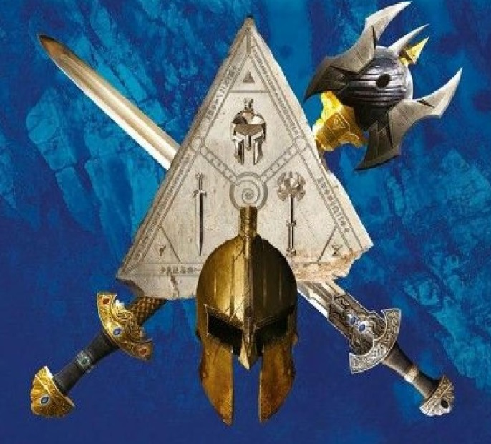The Hanging Gardens of Babylon is an ancient location, and is one of the seven ancient wonders. It also housed one of the pieces of the Golden Capstone.
Fictional History[]
Seven Ancient Wonders[]
At some point in the past, a gigantic open-sided cavern was formed in Iraq, with a gigantic stalactite hanging from the cavern's ceiling.
During his reign, the Neo-Babylonian King Nebuchadnezzar II had the Hanging Gardens built out of the cavern and its stalactite for his Median wife, Queen Amytis, because she missed the green hills and valleys of her homeland.
Overseen by the Egyptian architect Imhotep III, a ziggurat was constructed beneath the stalactite to provide the workers with a point at which they could reach and begin digging into the stalactite. A tunnel leading up and then out of the stalactite was made, followed by a pathway that led all the way around and up to the top of the cavern, and finally a series of bore holes to the surface were made to provide light to the White Desert roses planted along the stalactite. Imhotep III was also tasked with creating a series of traps to guard the Gardens, however he chose not to do this on the stalactite itself out of respect for it. As a final means to keep the Gardens hidden, Imhotep III then caused a landslide on the mountain housing the cavern in order to cover the entrance, and soon had a river diverted to create a waterfall over the constructed entrance into the Gardens.
During the construction of the Hanging Gardens, a royal messenger would set out from the cavern to bring Nebuchadnezzar II a progress report, only to be beaten and robbed along the way, with the cloth depicting the image of the in-construction Gardens being kept at an old village along the messenger's route.
After Alexander the Great oversaw the disassembly of the Golden Capstone, he arranged for each of the Capstone's component Pieces to be hidden by priests of the Cult of Amun Ra within the constructs that would become known as the seven Wonders of the Ancient World. The already-existent Gardens was chosen as one of the hiding places, and soon one of the Capstone's middle Pieces was hidden in a shrine built into the ceiling of the cavern. The Callimachus text would later be written to note the location of the Hanging Gardens and its accompanying Capstone Piece.
For over two thousand years, the Hanging Gardens of Babylon would remain the only one of the seven Wonders to remain hidden, to the point that no one could find any evidence that the Hanging Gardens had ever existed at all.
During his research to locate the Pieces of the Capstone, Mustapha Zaeed located the cloth depicting the image of the Hanging Gardens.
.
Features[]
The Stalactite[]
.
Ziggurat[]
.
Well of the Winged Lion[]
.
Trivia[]
.
